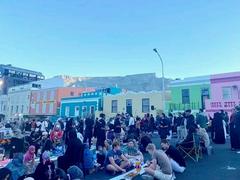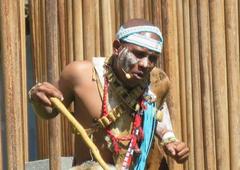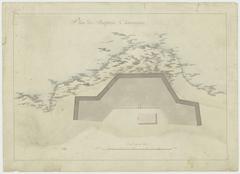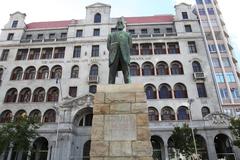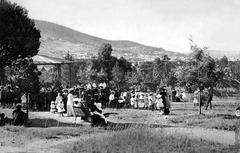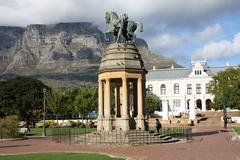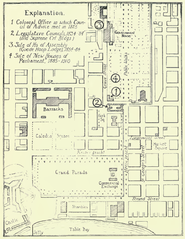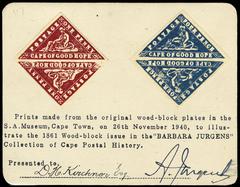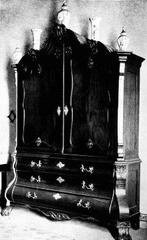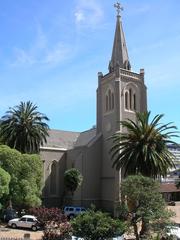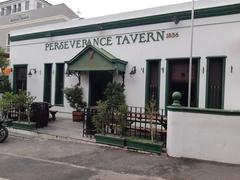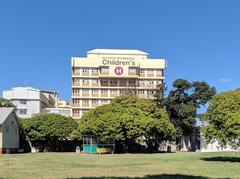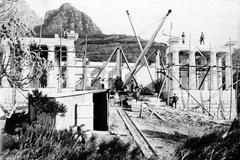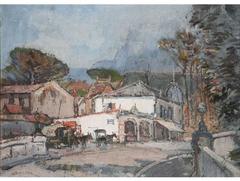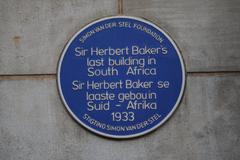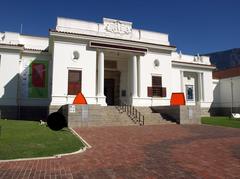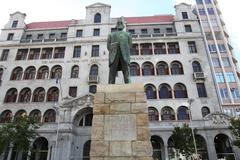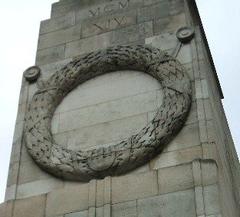Slave Tree Memorial Cape Town: Visiting Hours, Tickets, and Historical Sites Guide
Date: 14/06/2025
Introduction
Cape Town’s Slave Tree Memorial, located on Spin Street in the heart of the City Bowl, is a powerful site of remembrance for South Africa’s centuries-long history of slavery. While the original milkwood tree—under which enslaved people were auctioned from the 17th century until the early 20th century—no longer stands, the understated plaque marking its place serves as a poignant reminder of the suffering, resilience, and enduring legacy of enslaved communities. The memorial is deeply woven into Cape Town’s urban landscape, offering both locals and visitors an essential opportunity to reflect on the city’s past and its ongoing journey toward justice and reconciliation (City of Cape Town Slave Heritage Walks, Lonely Planet, Mail & Guardian).
This comprehensive guide covers the history and significance of the Slave Tree Memorial, practical visitor information, recommended nearby sites, guidelines for respectful engagement, and tips for responsible tourism.
Historical Background and Significance
Origins of Slavery at the Cape
The Dutch East India Company (VOC) established a refreshment station at the Cape of Good Hope in 1652. Due to labor shortages, the VOC began importing enslaved people as early as 1658. The first group arrived from Angola and Guinea, with subsequent forced migrations from Madagascar, Mozambique, India, Sri Lanka, Indonesia, and East Africa. By the time slavery was abolished in 1834, over 63,000 enslaved individuals had been brought to the Cape, profoundly shaping the city’s culture, society, and economy (City of Cape Town Slave Heritage Walks).
Enslaved people performed crucial roles in agriculture, domestic work, skilled trades, and the construction of Cape Town’s earliest buildings and roads.
The Slave Tree Auction Site
The original “Slave Tree” stood on Spin Street, serving as the site for public auctions of enslaved people—most actively between 1826 and 1835 before slavery’s abolition. The tree was cut down in 1916, but its historical importance is commemorated by a bilingual plaque that now marks the location (The Heritage Portal, Mail & Guardian). The loss of the tree itself is deeply symbolic, signifying both the erasure and the enduring memory of slavery.
Visiting the Slave Tree Memorial
Location and Access
- Address: Spin Street, adjacent to Church Square, Cape Town City Bowl.
- Coordinates: 33°55’31.5”S 18°25’16.7”E (WhereToStay)
- Nearby Landmarks: Iziko Slave Lodge Museum, Groote Kerk, District Six Museum, Company’s Garden, Parliament.
Directions:
- On Foot: From the Company’s Garden, exit onto Queen Victoria Street, walk north, cross at Spin Street, and proceed 300 meters to the site.
- By Public Transport: MyCiTi bus stops at Adderley Street; from there, it’s a short walk.
- By Car: Limited street parking is available in the area.
Visiting Hours and Tickets
- Opening Hours: The memorial is outdoors and accessible 24/7.
- Admission: Free; no ticket required.
Accessibility
- The site is at ground level; wheelchair accessible, but be cautious of uneven paving and vehicular traffic.
- No on-site facilities; public restrooms and cafes are nearby in the city center.
Memorial Features and Atmosphere
- Plaque: A simple, ground-level bilingual plaque reads: “On this spot stood the old slave tree / Op hierdie plek het die ou slaweboom gestaan” (WhereToStay, The Heritage Portal). The original inscription has become worn due to foot traffic.
- Adjacent Memorials: In Church Square, the Cape Town Memorial to the Enslaved (2008) consists of eleven black granite blocks engraved with names and evocative words tied to the history of slavery (Current Conservation).
- Setting: The memorial is surrounded by historic buildings and modern city life, inviting quiet reflection amid urban activity.
Guidelines for Respectful Engagement
- Reflection: Approach the memorial quietly and respectfully. Loud conversations and disruptive behavior are discouraged.
- Photography: Discreet, non-intrusive photography is permitted.
- Littering and Vandalism: Please keep the site clean and free of graffiti.
- Group Visits: Maintain a respectful atmosphere for individuals and groups commemorating the site.
- Cultural Sensitivity: Recognize the memorial’s special significance for descendants of enslaved people and Cape Town’s broader community. Participate in dialogue or commemorative events with openness and respect.
Enhancing Your Visit
Educational Opportunities
- Nearby Museums: The Iziko Slave Lodge Museum offers exhibitions on slavery and human rights; the District Six Museum explores forced removals and resilience (Nomadic Matt, Nomadasaurus).
- Self-Guided Walks: City of Cape Town’s Slave Heritage Walks offer routes with historical context and personal stories (City of Cape Town Slave Heritage Walks).
- Special Events: Emancipation Day (December 1) features annual commemorations, marches, and wreath-laying ceremonies at the memorial (Mail & Guardian).
Travel Tips
- Best Time to Visit: Daylight hours are safest and most conducive to reflection.
- Safety: Be mindful of traffic and urban surroundings; keep valuables secure (The Unconventional Route).
- Weather: Cape Town weather can be variable—bring a jacket even in summer.
Responsible Tourism
- Support local museums and heritage projects, such as the Iziko Museums (Iziko Museums).
- Advocate for the ongoing preservation of the Slave Tree Memorial, which currently lacks formal national heritage status (The Heritage Portal).
Frequently Asked Questions (FAQs)
Q: Is the Slave Tree Memorial open every day?
A: Yes, the memorial is outdoors and accessible at all times.
Q: Is there an entry fee?
A: No, the site is free to visit.
Q: Are there guided tours?
A: While there are no dedicated tours for the memorial, it is included in several broader Cape Town history walking tours and in the City’s Slave Heritage Walks.
Q: Is the site wheelchair accessible?
A: Yes, but visitors should take care due to nearby traffic and uneven paving.
Q: Can I take photographs?
A: Yes, but do so respectfully, being mindful of others who may be reflecting or commemorating.
Conclusion
The Slave Tree Memorial stands as a quiet yet powerful testament to Cape Town’s legacy of slavery and the ongoing process of remembrance and reconciliation. By visiting, reflecting, and engaging with this site, you honor the memory of those who suffered and contribute to a broader understanding of South Africa’s complex heritage. Complement your visit with nearby museums and commemorative events, and approach the site with the dignity and respect it deserves.
For more in-depth guides, audio tours, and updates on Cape Town’s historical sites, consider downloading the Audiala app or following local heritage organizations online.
References and Further Reading
- City of Cape Town Slave Heritage Walks
- IOL Article on Cape Families’ History
- Slave Tree Memorial, Cape Town - Lonely Planet
- Shadows of the Old Slave Tree - Mail & Guardian
- Remembering Slavery in Urban Cape Town - Cambridge University Press
- Slave Sales and Cape Town’s Slave Tree Memorial - The Heritage Portal
- Heritage Trees of Cape Town: Beacons of Local History and Culture - Current Conservation

